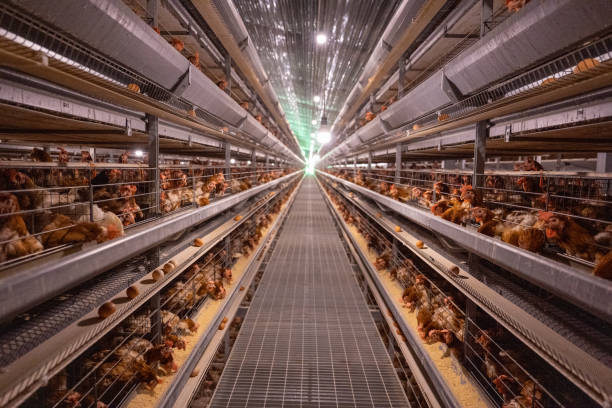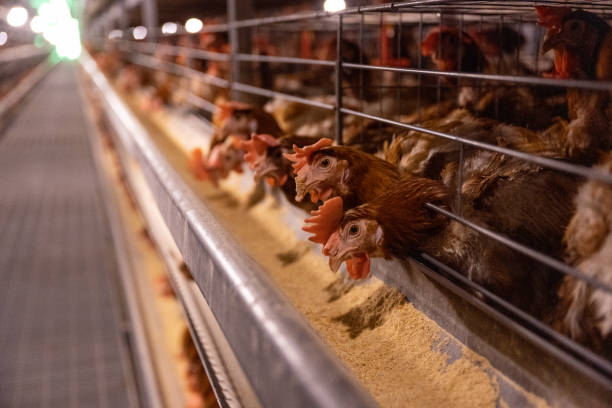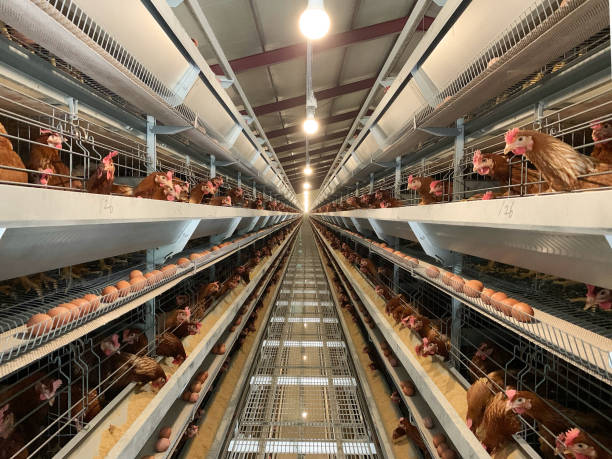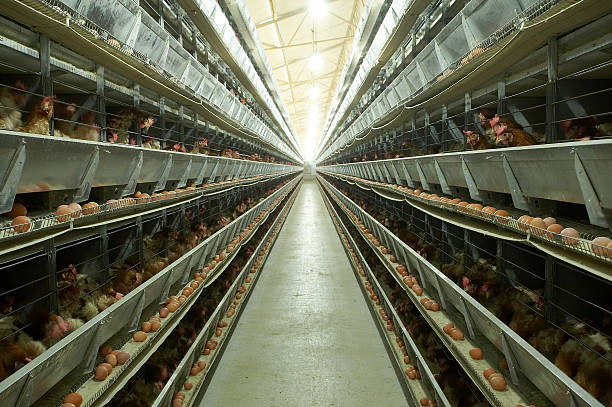
70,000 Broiler Chicken Cage System: Maximizing Efficiency & Profitability
70,000 Broiler Chicken Cage System: Maximizing Efficiency & Profitability
In the competitive world of poultry farming, maximizing efficiency and profitability is the name of the game. For broiler farmers aiming to scale their operations, a 70,000-broiler chicken cage system presents a compelling option. This large-scale setup, when implemented correctly, can offer significant advantages in terms of space utilization, management control, and overall production performance. Let’s delve into the intricacies of such a system, exploring its benefits, key components, operational best practices, and factors contributing to its success.
Why Consider a 70,000 Broiler Chicken Cage System?
The move towards larger, more intensive broiler farming operations is driven by the need to meet increasing consumer demand for poultry meat at competitive prices. A 70,000-broiler chicken cage system provides several key benefits that contribute to this goal:
Enhanced Space Utilization: One of the most significant advantages of using cages is the ability to house more birds per unit area compared to traditional floor systems. Cages allow for multi-tiered arrangements, effectively utilizing vertical space and maximizing bird density. This is particularly beneficial for farmers with limited land availability.
Improved Management Control: Caged systems facilitate better monitoring and management of individual birds or groups of birds. Farmers can easily observe bird health, feeding habits, and overall performance. This allows for early detection of potential problems and timely intervention, minimizing losses and maximizing productivity.
Reduced Disease Transmission: The separation of birds in cages limits bird-to-bird contact, which significantly reduces the risk of disease transmission. This leads to lower mortality rates, reduced medication costs, and improved overall bird health.
Optimized Feeding and Watering: Caged systems allow for precise control over feeding and watering. Farmers can implement automated feeding and watering systems that deliver the right amount of feed and water to each cage row, minimizing feed wastage and ensuring that all birds have access to adequate resources.

Easier Waste Management: Waste collection and removal is simplified in caged systems. Manure can be collected in designated areas beneath the cages, making it easier to handle, process, or dispose of in an environmentally responsible manner.
Better Environmental Control: Broiler chicken cage systems often integrate with environmental control systems such as ventilation, heating, and cooling. These systems create a more consistent and comfortable environment for the birds, promoting optimal growth and reducing stress.
Key Components of a 70,000 Broiler Chicken Cage System
A successful 70,000-broiler chicken cage system is more than just cages. It’s a carefully integrated infrastructure that encompasses several essential components:
Broiler Cages: The cages themselves are the core of the system. These are typically multi-tiered structures made from galvanized steel wire mesh. The design of the cages should prioritize bird comfort, easy access to feed and water, and efficient waste removal. Cage dimensions should be carefully chosen to provide adequate space for the birds to move and grow.
Feeding System: An automated feeding system is critical for distributing feed evenly and efficiently throughout the cage rows. These systems often consist of feed hoppers, conveying mechanisms (such as augers or chain feeders), and feed troughs. The system should be designed to deliver the appropriate amount of feed based on the birds’ age and growth stage.
Watering System: An adequate and reliable water supply is essential for broiler health and performance. Nipple drinkers are commonly used in caged systems as they provide a clean and hygienic source of water while minimizing spillage. The number and placement of nipple drinkers should be sufficient to ensure that all birds have easy access to water.
Ventilation System: Proper ventilation is crucial for maintaining air quality, removing excess heat and moisture, and preventing the buildup of harmful gases like ammonia. Ventilation systems can be natural (using fans and vents) or mechanical (using exhaust fans and air inlets). The ventilation rate should be adjusted based on the bird density, climate conditions, and age of the birds.
Manure Removal System: Efficient manure removal is essential for maintaining hygiene and reducing odor. Common manure removal systems include belt systems (where manure is collected on belts and transported to a central location) and scraper systems (where manure is scraped from beneath the cages). The system should be designed to minimize labor requirements and maintain a clean environment.
Environmental Control System: Precise control of temperature, humidity, and lighting is vital for optimizing broiler performance. Heating systems (such as gas heaters or radiant heaters) can be used to maintain the desired temperature during cold weather. Cooling systems (such as evaporative coolers or tunnel ventilation) can be used to reduce heat stress during hot weather. Programmable lighting systems can be used to regulate the photoperiod (the duration of light exposure) to promote optimal growth and feed conversion.
Control Panels and Automation: Modern broiler chicken cage systems often incorporate sophisticated control panels and automation systems. These systems can monitor and control various parameters, such as temperature, humidity, ventilation rate, feeding schedules, and lighting programs. Automation helps to reduce labor costs, improve accuracy, and optimize overall system performance.

Operational Best Practices for a 70,000 Broiler Chicken Cage System
Investing in a 70,000-broiler chicken cage system is only the first step. Effective management and operational best practices are essential for realizing the full potential of the system:
Precise Stocking Density: Determining the optimal stocking density within the cages is crucial. Overcrowding can lead to increased stress, reduced growth rates, and higher mortality. Under-stocking, on the other hand, can reduce overall production efficiency. Consultation with poultry experts and adherence to industry guidelines are essential for establishing the appropriate stocking density.
Strict Biosecurity Measures: Implementing strict biosecurity measures is crucial for preventing disease outbreaks. This includes controlling access to the farm, disinfecting equipment and footwear, implementing a rodent and pest control program, and maintaining a clean and hygienic environment.
Regular Bird Health Monitoring: Frequent observation of bird health is essential for early detection of potential problems. Farmers should regularly check for signs of illness, such as lethargy, ruffled feathers, reduced feed and water intake, and abnormal droppings. Prompt diagnosis and treatment of diseases are critical for minimizing losses.
Optimal Feeding and Watering Management: Following a well-designed feeding program is essential for maximizing growth rates and feed conversion. Feed formulations should be tailored to the birds’ age and growth stage. Regular monitoring of feed consumption and adjustment of feeding schedules are necessary to ensure that the birds are receiving the appropriate amount of nutrients. The watering system should be regularly checked to ensure that all birds have access to clean and fresh water.
Maintaining a Comfortable Environment: Creating a comfortable environment for the birds is essential for reducing stress and promoting optimal performance. This includes maintaining the desired temperature, humidity, and ventilation rate. Regular monitoring of environmental conditions and adjustment of the environmental control system are necessary to ensure that the birds are comfortable.

Efficient Manure Management: Regular manure removal is essential for maintaining hygiene and reducing odor. The manure removal system should be operated efficiently to minimize labor requirements and prevent the buildup of manure. Manure should be stored and disposed of in an environmentally responsible manner.
Data Collection and Analysis: Regular data collection and analysis are essential for monitoring system performance and identifying areas for improvement. This includes tracking parameters such as feed consumption, water consumption, growth rates, mortality rates, and feed conversion ratios. Analyzing this data can help farmers identify potential problems and make informed decisions to optimize system performance.
Well-Trained Personnel: Properly trained personnel are essential for operating and maintaining the broiler chicken cage system. Staff should be trained on all aspects of system operation, including bird health monitoring, feeding and watering management, environmental control, and manure management. Regular training and updates are necessary to ensure that staff are up-to-date on the latest best practices.
Factors Contributing to the Success of a 70,000 Broiler Chicken Cage System
The success of a 70,000-broiler chicken cage system depends on a combination of factors, including:
High-Quality Equipment: Investing in high-quality equipment is essential for ensuring the reliability and longevity of the system. Cages, feeding systems, watering systems, ventilation systems, and manure removal systems should be durable, easy to maintain, and designed to optimize bird performance.
Proper System Design: The design of the system should be carefully considered to ensure that it is well-suited to the specific needs of the farm. Factors such as climate conditions, land availability, and labor availability should be taken into account when designing the system.
Effective Management: Effective management is essential for realizing the full potential of the system. This includes implementing strict biosecurity measures, monitoring bird health, optimizing feeding and watering management, maintaining a comfortable environment, and efficiently managing manure.
Adequate Funding: Adequate funding is necessary to invest in high-quality equipment, implement effective management practices, and cover operating expenses. Farmers should carefully assess their financial resources and develop a comprehensive business plan before investing in a 70,000-broiler chicken cage system.
Access to Expertise: Access to poultry experts, veterinarians, and other specialists can be invaluable for troubleshooting problems and optimizing system performance. Farmers should establish relationships with these professionals and seek their advice as needed.
Commitment to Animal Welfare: A commitment to animal welfare is essential for maintaining ethical and sustainable farming practices. Birds should be kept in a comfortable and healthy environment, and their needs should be met in a humane manner.
Conclusion
A 70,000-broiler chicken cage system represents a significant investment and a commitment to intensive poultry production. By carefully planning, investing in high-quality equipment, implementing best management practices, and remaining committed to animal welfare, poultry farmers can unlock the efficiency and profitability potential of such a system, contributing to a more sustainable and productive poultry industry. It’s not a simple undertaking, but with the right approach, a 70,000-broiler system can be a pathway to success in the modern poultry market. Remember to always prioritize bird health and welfare, as these are fundamental to both ethical farming and a profitable operation.
